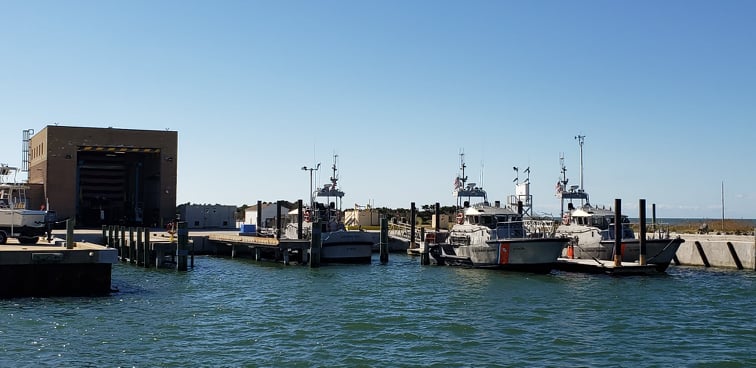The United States Coast Guard is best known for its motto “That Others May Live”. But it has evolved a lot over the years.
“Coast Guard Day” is celebrated nationally on August 4 each year and 2022 will mark its 232n/a anniversary, but the origin of this date can be confusing. In fact, the origin of the Service itself can be somewhat confusing. So here we go, one step at a time.
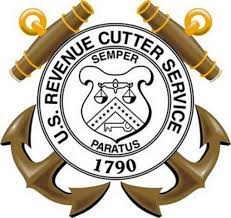
The current genesis of the United States Coast Guard
The incredible US Coast Guard we all know and love today is the evolution and amalgamation of several organizations. Each had a special function and its own unique date of origin.
The United States Tax Navy was formed in 1790. It was the answer of the new American nation to “how are we to have a national income?” President George Washington asked his Treasury Secretary, Alexander Hamilton, to answer this question. Hamilton soon realized the answer was exactly what we had been fighting for. We had evaded UK taxes on shipped goods for years; we knew where all the hiding places were. So let the United States start taxing these ships! The aptly named Revenue Marine was the service created for this. The sailboats used for this fleet were known as “cutters”, a term derived from earlier ships of the 18e and 19e centuries that had a pointed hull design intended for speed and would thus cut through the water. For this reason, the service was later named the “US Revenue Cutter Service” (USRCS). For many years. At the time, it was the only US naval force, preceding the official United States Navy.
The USRCS had the singular mission of law enforcement at sea. Although they were not trained or equipped to respond to shipwrecks, they encountered them often. Much like a modern police force, it was always natural to try to help, and they often did.
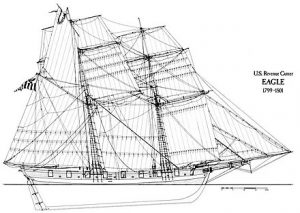
The Coast Guard continues to use the term “cutter” today, in reference to all of its vessels 65 feet (19.8 m) or more in length, which have a permanently assigned crew with accommodations on board. They carry the ship prefix USCGC, then the name of the cutter.
The United States Lifesaving Service was established in 1871. Despite attempts to combat shipwreck-related loss of life and property for years – (such as the 1790 United States Lighthouse Establishment, the 1786 Massachusetts Humane Society, even the 1848 New Jersey so- called U.S. Life-Saving Service, and the 1880 Women’s National Relief Association)—thousands of wreckage and loss continued year after year.
After extremely serious and highly publicized shipwreck losses in the 1870s and 1871, Congress finally, and reluctantly, created the United States Life-Saving Service as a department of the USRCS, to specialize in the rescue of victims of shipwrecks. However, he was ripe with cronyism and shamefully ineffectual. America would later react to a crisis again, demanding improvements after the two sinkings of the Huron and Metropolis. They were two months and twenty miles apart off the dreaded Outer Banks of North Carolina already known as the Graveyard of the Atlantic. Nearly 200 souls were lost, many within sight of Nags Head Beach.
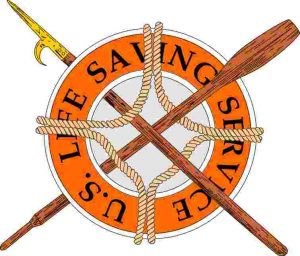 A new, separate organization still named the United States Life-Saving Service (USLSS) was created in 1878. It was headed by Strict Superintendent Sumner I. Kimball, who radically cleaned up the house and totally reorganized the service. There was an immediate and massive increase in the percentage of lives and property saved. This has continued nearly every year that the USLSS has existed. The Surfmen of this service became America’s sweethearts and were celebrated in every magazine and newspaper of the day.
A new, separate organization still named the United States Life-Saving Service (USLSS) was created in 1878. It was headed by Strict Superintendent Sumner I. Kimball, who radically cleaned up the house and totally reorganized the service. There was an immediate and massive increase in the percentage of lives and property saved. This has continued nearly every year that the USLSS has existed. The Surfmen of this service became America’s sweethearts and were celebrated in every magazine and newspaper of the day.
The United States Coast Guard officially formed on January 28, 1915. The “Coast Guard Act” was passed by Congress on January 20, 1915, and signed into law by President Woodrow Wilson on January 28. The law merged the two above – cutting the US Revenue Service with the United States Life-Saving Service. The Coast Guard then had two functions: saving lives and enforcing maritime laws.
The Bureau of Navigation was established in 1862. The main responsibilities were to provide nautical charts and instruments and to oversee several activities involved in navigation research, including the Naval Observatory. In 1884, the missions expanded to include the enforcement of laws relating to the construction, equipment, operation, inspection, safety and documentation of merchant ships. The Bureau also investigated marine casualties and accidents; tonnage taxes and other navigation charges levied; and screened, certified and licensed Merchant Seamen. In 1889, the Bureau acquired responsibility for personnel management, which eventually became its primary function.

The Steamboat Inspection Service was an American agency also established in 1871 to protect life and property at sea. It merged with the Bureau of Navigation in 1932 to form the Bureau of Steamboat Navigation and Inspection which , in 1936, was reorganized into the Bureau of Maritime Inspection and Navigation.
The Lighthouse Service is the oldest, best known and busiest of all maritime coastal services. Created in 1790, it simply warned ships at night where land was. Eventually, hundreds of these quasi-permanent structures dotted all of America’s coasts. While they have undoubtedly saved many overnight voyages from disaster, the storms have resulted in thousands of shipwrecks each year. Alone, they would not be enough.
Coast Guard Missions Today
Eventually, all of these separate organizations with their specialized missions were amalgamated into the United States Coast Guard at various points in history, with the Lighthouse Service being the last in 1939. The Coast Guard therefore inherited all missions from the Revenue Cutter. Service, the Lifesaving Service, the Lighthouse Service, the Navigation Bureau and the Steamship Inspection Service.
In modern times, others have been added to deal with current situations. Today’s Coast Guard is under the Homeland Security banner and now has eleven missions: Port and Waterway Security, Drug Interdiction, Aids to Navigation, Search and Rescue, Living Marine Resources, Maritime Security, Defense Preparedness, Interdiction of Migrants, Marine Environmental Protection, Ice Operations and Law Enforcement.
Coast Guard Day Date
With so many origin dates in its history, it was only natural to choose the first and oldest date as the day to celebrate Coast Guard history. As such, the August 4, 1790 date for the Revenue Marine Service, (America’s first and oldest marine service), was a logical choice. So happy 232n/a Anniversary of the esteemed United States Coast Guard. Ho-Rah!
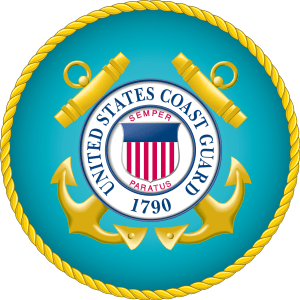
What does the Coast Guard do?
The average American is unaware of the day-to-day operations of the United States Coast Guard. Here’s what they’re doing, all over the world:
Average Coast Guard Day 2022
- Performs 42 search and rescue cases;
- save 12 lives;
- Saves over $114,000 in property;
- Seized 1,253 pounds of cocaine and 172 pounds of marijuana;
- Performs 133 maritime patrols of critical maritime infrastructures;
- Banned 18 illegal migrants;
- Escort 9 large capacity passenger ships;
- Performs 13 security boardings in and around US ports;
- Screens 313 merchant ships for potential security threats before they arrive at U.S. ports;
- Leads 19 Fisheries Conservation Boardings;
- Services 45 buoys and fixed aids to navigation;
- Investigation of 26 pollution incidents;
- Performs 24 safety reviews on foreign vessels;
- Performs 162 marine inspections of US vessels and facilities;
- Investigation of 17 maritime accidents involving commercial vessels;
- Facilitates the movement of $15.6 billion in goods and cargo through the country’s maritime transportation system.
The first official US Coast Guard rescue
I was curious about the first rescue once the Service officially became the US Coast Guard. For this, I searched for the first Annual report of the United States Coast Guard for the fiscal year ended June 30, 1915.
Part of this very detailed report contained an extremely exhaustive section titled “Tabular record of assistance provided by cutters and stations, involving the safeguarding of life and property”. It was 81 pages from page 141 to 222, with details of EVERY operation of every station and cutter in the country. The summary averaged about 20 entries per page.
There was only one entry for January 28, 1915. The carolina Supply Boat at Cape Hatteras Station, a 17-ton White Wing motorboat with eleven crew on board, was rescued with the following official remarks: ‘Beached; transported in deep water.
It was 107 years ago! Congratulations, United States Coast Guard, for always protecting ships in the Graveyard of the Atlantic. Even with the enormity and diversity of his missions, his most cherished missions remain a legacy motto of the United States Life-Saving Service – For others to live.
James D. Charlet is the author of Shipwrecks of the Outer Banks: Dramatic rescues and fantastic shipwrecks in the Graveyard of the Atlantic, Globe Pequot Press (imprint of Rowman & Littlefield), ISBN 978-1-4930-3590-8 (hardcover) and presents a variety of “live theatre” programs for “Keeper James Presentations” based on excerpts from chapters of his book. . He can be contacted at [email protected]. See www.KeeperJames.com for more information.

